Hair coloring "tiger's eye": technique of execution
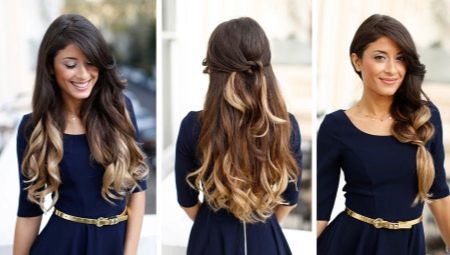
One of the most original types of highlighting is "tiger's eye" - a technique that has a number of obvious advantages. This coloring technique is suitable for most of the fair sex and allows you to achieve a spectacular appearance of hair, which explains its steadily growing popularity. To achieve the desired result, it is enough to know the basic rules for performing such highlighting, which make it possible to solve the problem posed both in a beauty salon and at home.
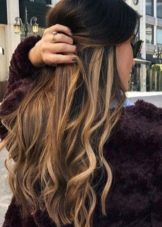


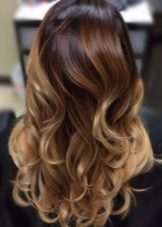
What it is?
The method under consideration owes its name to the eponymous variety of silica with admixtures of iron compounds, giving it an original golden brown color. The play of such stones in the light is especially beautiful, capable of captivating any connoisseur of aesthetics and originality. The "developer" of the "tiger eye" technique is Corey Tuttle, a famous stylist from the United Kingdom, whose ideas are successfully used by many show business stars.
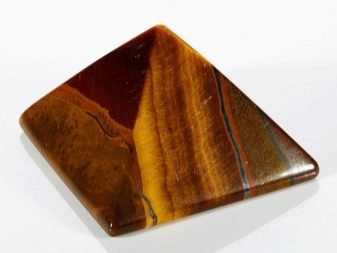
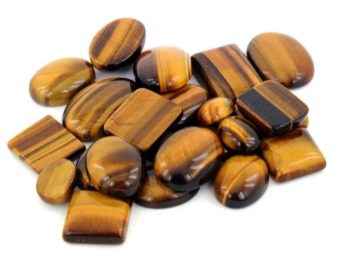
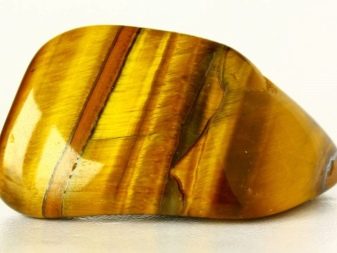
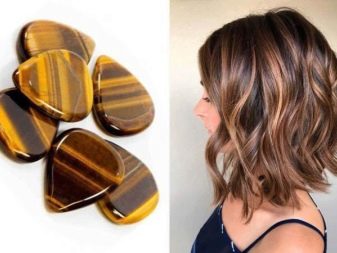
Despite the fact that the presented technique is a kind of highlighting, it has its own specifics that distinguish it from the standard variation of this procedure. As for the most significant features of the "tiger's eye", they are listed below.
- The described technique is primarily intended for dark hair. The experience of professionals shows that the "tiger eye" is optimal for brown-haired women, brunettes and fair-haired girls, while owners of light hair should opt for other dyeing techniques.
- As a rule, this technique is not applied to red hair. In this, it differs significantly from other types of highlighting, which are very relevant for such a head of hair.
- Coloring the strands selected for selection against the main dark background involves the use of tones, the range of which is relatively narrow (bright colors are unacceptable for the "tiger's eye"). First of all, these include golden, caramel, honey, chestnut, copper and light chocolate shades characteristic of the ornamental stone mentioned above.
Another characteristic feature of the "tiger's eye" is the rejection of a sharp selection of strands, which makes it imperative to create smooth transitions between contrasting shades.

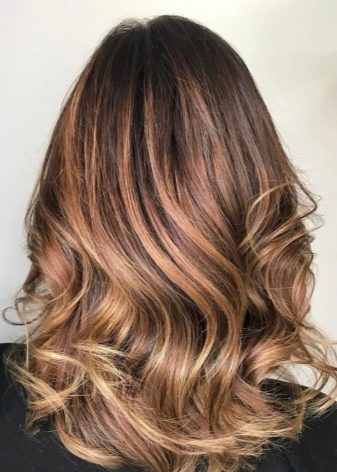
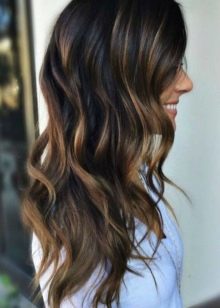
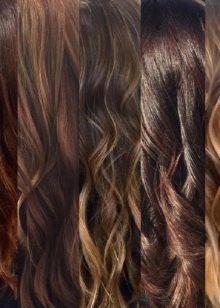
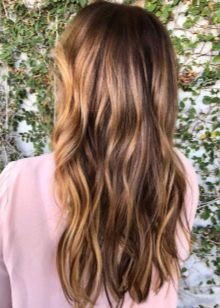
Advantages and disadvantages
While developing the described methodology, Corey Tuttle wanted to achieve an organic combination of originality, beauty and practicality. The solution to this problem was a technique that involves dyeing individual strands not from the root itself, but somewhat lower. This feature of the "tiger's eye" allows you to reduce the frequency of correction, which is one of its most significant advantages.
However, this technique has a list of other advantages.
- A noticeable improvement in the appearance of the hair. Thanks to the "tiger's eye", they look stronger, thicker and healthier, and their volume visually increases.
- Positive impact on the vast majority of images created. Using this technique allows a woman to look younger than her age, which is facilitated by the soft and romantic features of the transformed head of hair.
- Minimal negative effect on hair. The execution of the "tiger's eye" involves the application of paint to individual strands (chemical treatment of the entire head of hair is not required).
In addition, the presented technique is versatile. She is equally well suited to representatives of various ages, social groups and professions, which makes her one of the best solutions for a spectacular transformation of the female image.
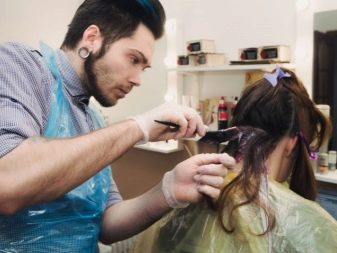
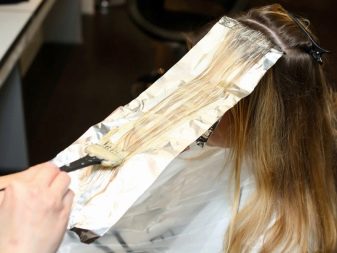
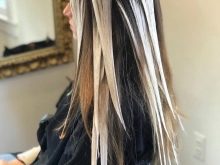
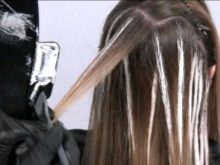
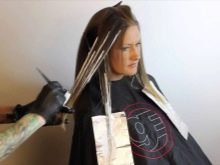
As for the shortcomings of the "tiger's eye" coloring technique, the main ones are the limitations due to hair color. (most experts do not recommend it to owners of light or red hair). Another feature of this technique, which may not suit the lovers of catchy solutions, is rejection of shocking tones in favor of calmer golden and brown shades. The rather high cost of such highlighting deserves mention, which can be reduced by performing this procedure at home.
Who is it suitable for?
Before proceeding to the description of the rules for performing the presented procedure, it is necessary to pay attention to the specifics of the transformed hair. Following this recommendation avoids many common mistakes and achieves the best visual result.
Straight and curly
Practice shows that the "tiger eye" is well suited for each of the mentioned types of hair. Special attention should be paid to curly hair, which provides for the choice of additional colors that are as close to natural as possible. So, shades of caramel, cocoa and cinnamon are most suitable for brown-haired women, and it is advisable for brunettes to give preference to coffee and dark amber tones.
Another recommendation that owners of curly hair should take into account is the use of the most delicate dyes. This is due to the increased fragility and dryness of such hair, which does not allow the use of agents that violate their structure. Such drugs are relatively expensive, but in this case it is hardly possible to do without them.

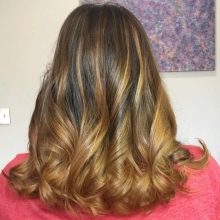

Short, medium and long
Most experts agree that the "tiger eye" is suitable for hair of any length.An equally significant circumstance, which will certainly delight modern women of fashion, is the successful combination of the described technique with a variety of haircuts: ladder, square, cascade, bob and many others.
If we highlight the option that professionals consider the most suitable for the painting technique under consideration, then such is long hair. The latter make it possible to realize the largest number of original ideas, which is especially important for performers with a rich imagination.

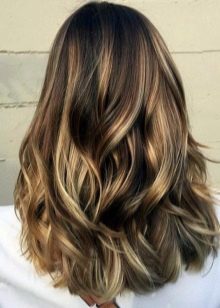

Dark and light
As mentioned earlier, the "tiger eye" is most preferable for brown-haired women and brunettes. An example is the transformation of hair, the main tone of which is chocolate, with the use of additional warm shades: caramel, honey, chestnut and copper. The result of coloring "tiger's eye" will be a head of hair that can boast of the richness of iridescent colors, the beauty of which is not inferior to the mineral of the same name.
As for light hair, their transformation using this technique is performed relatively rarely and involves the darkening of a number of strands. Experts recommend that you take these actions without haste, paying special attention to creating smooth transitions. If you highlight additional colors that are optimal in such cases, then their list will look like this:
- light chocolate;
- amber;
- honey (the best shade is buckwheat).
For red hair, "tiger's eye" provides for about the same tones, differing in slightly greater saturation.
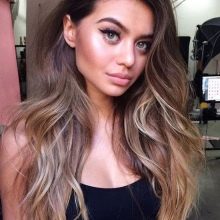
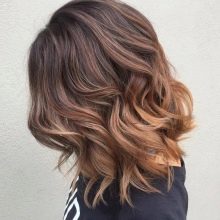
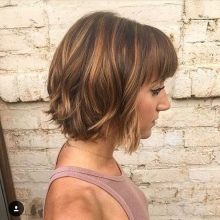
Performing staining
Despite the relatively high complexity of the described procedure, it is realistic to perform it on your own, without resorting to the services of a specialized specialist. At first, it is advisable to solve this task together with an assistant in order to avoid inconveniences due to lack of experience.
To perform "tiger eye" hair coloring you will need:
- gentle paints of warm colors, suitable for creating smooth transitions;
- clarifier;
- container for mixing the used products;
- disposable gloves;
- thin brush;
- foil for highlighting;
- sponge;
- shampoo;
- balm or conditioner.

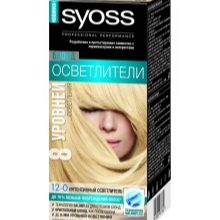


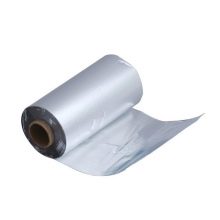

Further, the performer can start painting, strictly adhering to the recommended sequence of actions.
- Put on gloves, take a sponge and apply the clarifier to the selected strands with a brush, stepping back from the roots about 3 cm.This should be done so that the composition used is in the form of a V, the base of which is facing the ends of the hair, and the tops - to the roots.
- Wrap the strands with highlighting foil. This step significantly reduces the exposure time and makes the hair tone more intense. To prevent one strand from staining the other, they can be additionally wrapped with plastic wrap.
- Wait until the applied composition is well absorbed into the hair. In most cases, half an hour is enough for this, however, the contractor can extend this period if the specifics of the situation require it.
- Rinse your hair thoroughly, dry it slightly with a hairdryer and start coloring the roots. To solve this problem, it is necessary to use a shade that is as close to natural as possible (this minimizes aesthetic problems caused by gradual hair regrowth).
- Perform toning. This procedure can be carried out in a sink, on the surface of which the transformable strands are laid out. The artist applies the compositions of the desired shades in random order with a brush, like an artist painting a picture.
- Wait about half an hour (the specific time is determined by the specifics of the composition used), rinse off the remaining paint and treat the strands with balm or conditioner.
- Dry hair and curl slightly for best visual effect.
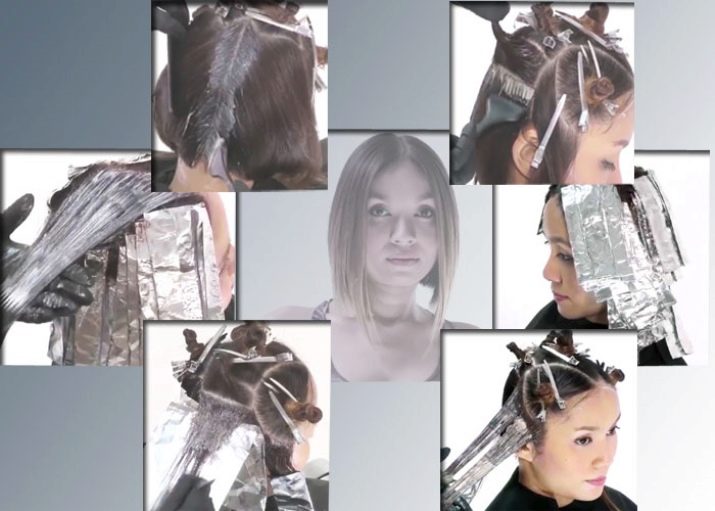
Depending on the length and thickness of the hair, the total duration of the staining procedure is 2-3 hours.
Further care
After the "tiger eye" hair coloring is done, the owner of the transformed head of hair remains to follow several useful recommendations:
- regularly apply moisturizing formulations for colored hair;
- abandon the frequent use of an iron and a hair dryer (it is advisable to use the latter in modes differing in the lowest temperature);
- to minimize the duration of exposure to the sun and the pool (to avoid discoloration and dryness).
As for the next hair coloring using the "tiger eye" technique, it should be done no earlier than six months later.
Summing up, we can confidently state that the popularity of the method under consideration is justified by its many advantages with a minimum number of disadvantages. "Tiger's Eye" contributes to the spectacular transformation of the female image, attracting enthusiastic eyes to it and giving positive emotions to each of its owners.
You can learn more about dyeing hair using the "tiger eye" technique in the next video.








